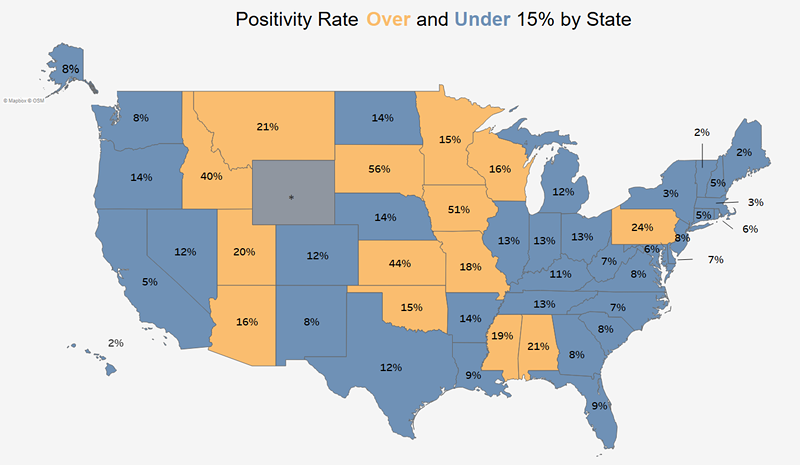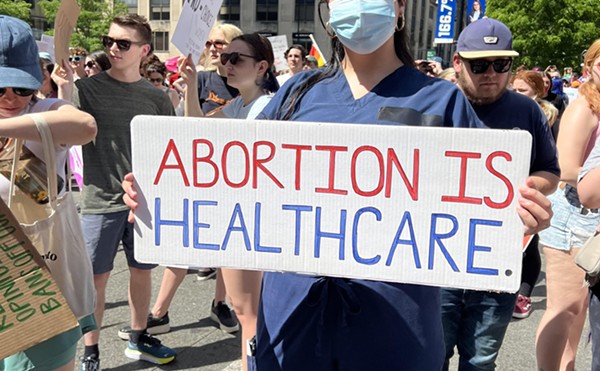With the upcoming Thanksgiving holiday looming on everyone's minds, the Ohio Department of Health has updated its travel advisory map.
This map features states whose positivity rate is 15% or higher, and discourages Ohioans from going to/visiting them.
If you do visit one of the yellow states on the map — or are traveling to Ohio from one of them — the health department recommends you self quarantine for 14 days.
"Positivity rate is an indicator of how much COVID-19 there is in a community, and ODH is recommending against travel to those states with high positivity," says the travel advisory landing page. "If someone must travel, ODH is recommending 14 days of self-quarantine after leaving those locations. This advisory is intended for both leisure and business travel, and should be heeded by both Ohioans and out-of-state travelers.
"It is intended as guidance and is not a mandate — please consider the information here along with other factors (mode of transportation, lodging, activities, ability to social distance when traveling, personal health factors, etc.) when making travel decisions for yourself and your family."
As of Nov. 19, based on a seven-day rolling average, these are the states the ODH recommends you avoid (plus their positivity rates):
- South Dakota (56.3%)
- Iowa (51.0%)
- Kansas (44.0%)
- Idaho (40.1%)
- Pennsylvania (24.0%)
- Alabama (21.2%)
- Montana (21.0%)
- Utah (20.1%)
- Mississippi (19.0%)
- Missouri (18.0%)
- Wisconsin (16.0%)
- Arizona (16.0%)
- Oklahoma (15.0%)
- Minnesota (15.0%)
Wondering how to self quarantine? Here's the ODH's advice:
- Remain at home and avoid all in-person activities. This includes work, grocery stores and pharmacies, public events, and public places.
- If you live in a home with other people who did not travel with you, stay in a separate room. If this is not possible, wear a face mask when you are in the same room and stay at least six feet away from others.
- Do not leave home except to seek medical care. If you need to see a provider for reasons other than a medical emergency, please call in advance and discuss the care you need.
- In the event of a medical emergency, call 9-1-1. Indicate that you are in home quarantine for novel coronavirus exposure. Keep a face mask on until you are asked by a health care provider to remove it.
- Do not have visitors in your home.






